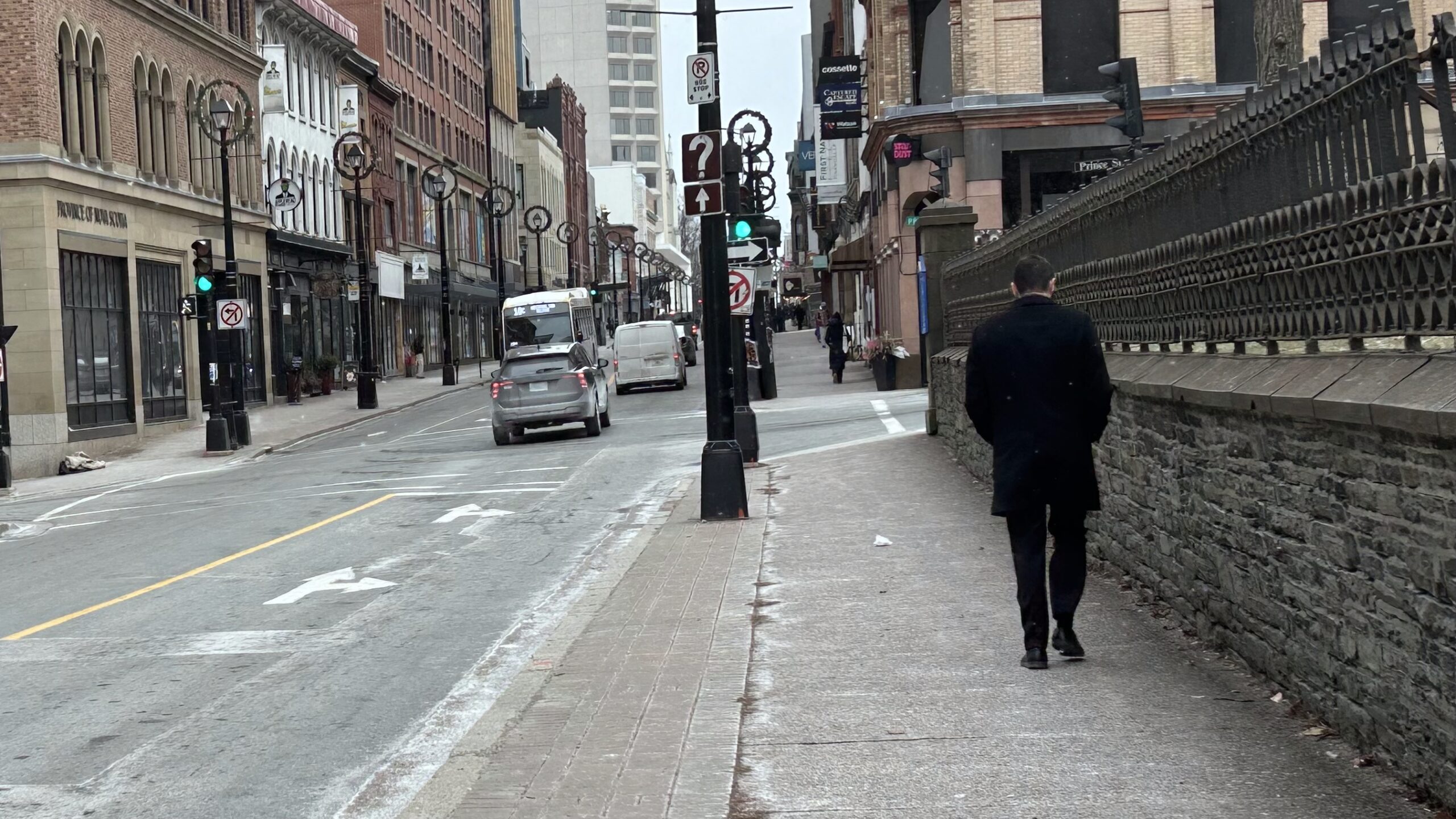City streets aren’t safe enough, committee told
Cyclists, road safety advocates say city should live up to its promises

caption
Drivers and pedestrians make their way down Barrington Street in Halifax on Thursday afternoon. Even though the city has reduced traffic fatalities, some advocates say more needs to be done.Despite a report saying Halifax Regional Municipality is making progress toward eliminating traffic fatalities, activists say the city hasn’t done enough.
The report, presented on Thursday before the city’s transport committee, highlights efforts put in place to improve the welfare of all road users.
The changes implemented included reducing speed limits, the use of high visibility crosswalks in addition to better road safety education and enforcement.
The report said 2023 saw a reduction in fatal collisions, to 6 from 11 in 2022.
HRM recorded 232 micromobility and pedestrian collisions in 2023, a slight reduction compared to 245 recorded in 2022. Micromobility refers to small conveyances like bicycles, scooters and wheelchairs.
But some advocates say change is not happening quickly enough.
Peter Zimmer, a long-time urban cyclist and regular at council meetings, was the first to voice his concerns.
“Our mobility commons (roads, bike lanes and sidewalks) often feel dangerous to users not in cars,” said Zimmer, who has been cycling in Halifax since the 1960s.
He said the report did not adequately address the challenges faced by pedestrians and users of micromobility devices.
“We have not been doing a good job making the city streets both feel safe and be safe,” Zimmer said.
He said previous commitments made by the city to improve transportation options for those not using cars have not been met.
“HRM has made thoughtful and noble vows to make things better,” he said, “but HRM has really not kept these vows top of mind as staff plan for 2024 and 2025.”
He pointed to HRM’s adoption of the Vision Zero initiative in 2022, a strategy aimed at eliminating all traffic fatalities and serious injuries while improving city mobility for everyone. This report is the first since the strategy was put into place.
“Where fatal and injury collisions do not show much improvement, regrettably there are few new initiatives,” said Norm Collins, president of Crosswalk Safety Society of Nova Scotia. “The goal set back in 2018-2019 seems to be all but forgotten.”
Collins echoed Zimmer’s sentiments, saying he was disappointed with the lack of tangible action despite the concerning data. He said it looks like the city plans to cut back on road safety.
“In light of the absence of progress — at least based on the advance tender submission back in December — it appears that the road safety department and capital budgets are going to be proposed to decrease, rather than increase,” Collins said.
“If progress is to be made, it needs to be understood what countermeasures are most effective,” he said.
The discussion sparked questions among council members and the public about data gaps and areas needing improvement, mainly the differences between data reported by the RCMP and Halifax Regional Police.
“There was just conflicting information between the two that wasn’t lining up.” said Sam Trask, supervisor of road safety and transportation.
“After discussions with police, it was determined that this annual report would continue reporting on overall injury collisions while the data issues are further investigated.”
The total number of motor vehicle collisions in HRM increased slightly from 5,257 in 2022 to 5,527 recorded in 2023.

